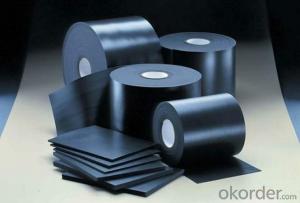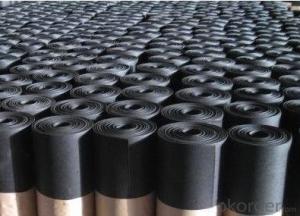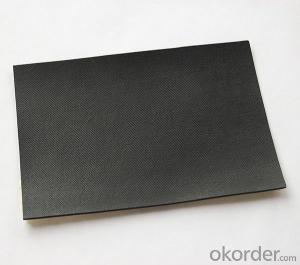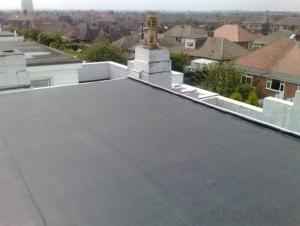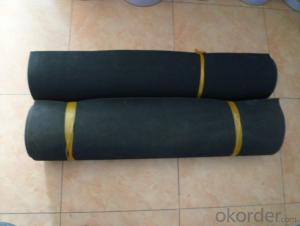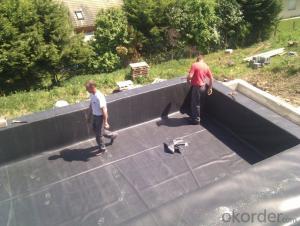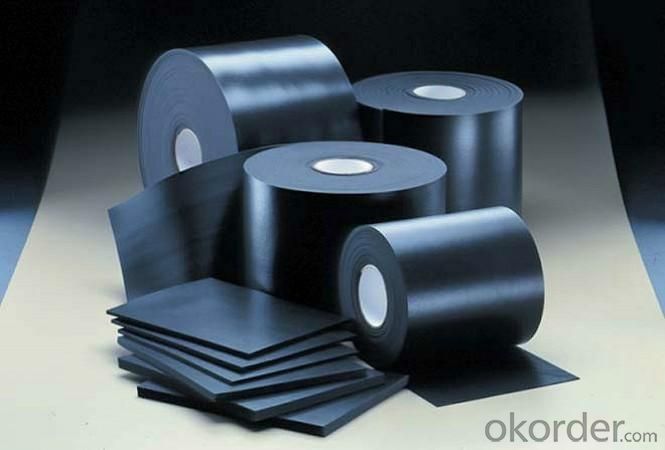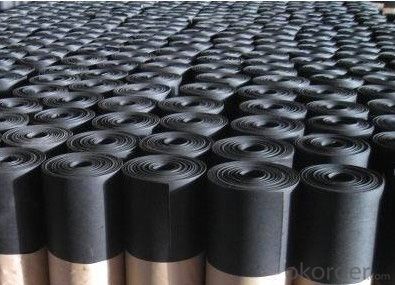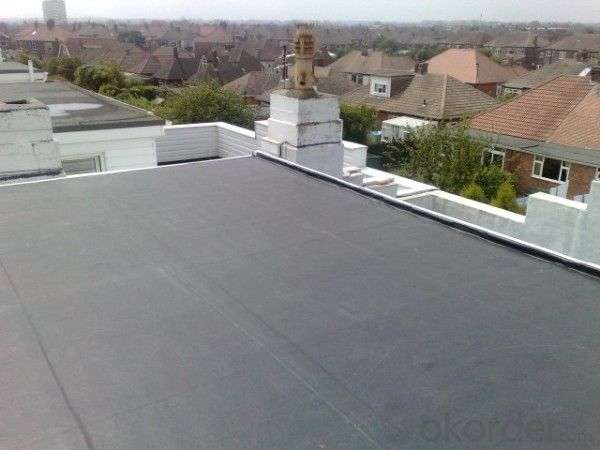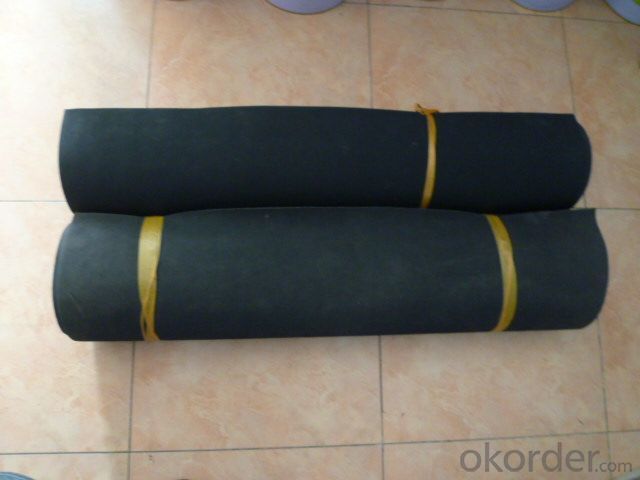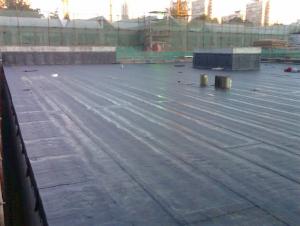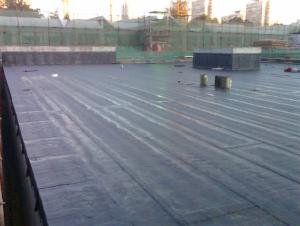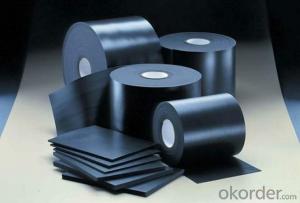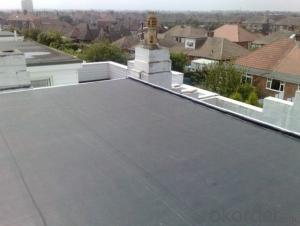EPDM Rubber Coiled Waterproof Membrane for Roofing
- Loading Port:
- Shanghai
- Payment Terms:
- TT OR LC
- Min Order Qty:
- 50000 m²
- Supply Capability:
- 5000000 m²/month
OKorder Service Pledge
OKorder Financial Service
You Might Also Like
EPDM Rubber Coiled Waterproof Membrane for Roofing
Description Of EPDM Rubber Coiled Waterproof Membrane for Roofing:
•EPDM waterproof sheet has excellent anti-ozone-aging performance, able to resist ultraviolet light and corrosion of many chemical corrosive materials in the atmosphere
•It has high tensile strength, high ductility and strong retractility, it has excellent crack resistance, able to effect waterproof function even with tiny vibration of buildings.
• Excellent resistance to ozone, oxidation and sunlight.
• Resistance to chemicals; resistant to most inorganic products.
Main Features of EPDM Rubber Coiled Waterproof Membrane for Roofing:
1>Excellent antiaging performance, service life up to 50 years
2>Working well with in 40C to 100C,it canbe constructed with a single layer in ambient temperature.
3>Waterproofing on various kinds of underground project,industrial of civil buildings and structures.
4>high extension rate, high tensile strength, small size changes at heat treatment
5>Good plant roots penetrability resistance and can be made waterproofing layer of planting roof
6>Special modified molecular structure ,effectively resolving the current domestic and foreign glue joint problem.
7>Good low temperature flexibility, and good performance of adapting to ambient temperature changes.
8>Convenient application ,solid joint, no environment pollution
9>chemical corrosion Resistance, can be used for special occasions
10>Convenient maitenance, low cost.
Specifications of EPDM Rubber Coiled Waterproof Membrane for Roofing:
| Material | EPDM Rubber |
| Size | 1.2m (width)*20m (length) or customized, weldable type 2.05m or 4m width |
| Thick | 1.2mm, 1.5mm, 2.0mm |
| Type | Vulcanized & Weldable |
| Pattern | Non-reinforced (homogeneous) |
| Certificate | ISO9001/14001 |
Applications of EPDM Rubber Coiled Waterproof Membrane for Roofing:
Widely used in roofs, basement, toilet ,swimming pool, and all kinds of industry and civil building waterproofing, reservoir, vivicism, bridge, underground, tunnel and dam waterproofing ,especially to the keystone waterproofing projects which is durability, high corrosion resistance and easy deformation.



IMages of EPDM Rubber Coiled Waterproof Membrane for Roofing:




FAQ of EPDM Rubber Coiled Waterproof Membrane for Roofing:
1. What are we supplying?
We are specialized in producing Colorful Asphalt Roof Shingle, SBS/APP modified bitumen waterproof membrane, Self adhesive bitumen waterproof membrane, PVC waterproofing membrane, EPDM rubber roofing membrane, Single Component Polyurethane Waterproof Coating, and Spray Polyurea Waterproof Coating
.
2. How Many years experience do we have?
We have been exported to more than 20 countries in the past 15 years.
3. How long do we usually reply your request?
We always reply our customer within 24 hours.
- Q: Can a waterproofing membrane be used in swimming pools or water features?
- Yes, a waterproofing membrane can be used in swimming pools or water features. Waterproofing membranes are specifically designed to prevent water leakage and can effectively seal and protect the surfaces of pools and water features from water damage.
- Q: Can a waterproofing membrane be used on roofs with slope?
- Yes, a waterproofing membrane can be used on roofs with slope. In fact, it is often recommended to use a waterproofing membrane on sloped roofs to prevent water infiltration and to ensure proper drainage. The membrane is installed beneath the roofing material and acts as a barrier against moisture, helping to protect the roof and the underlying structure from water damage.
- Q: Where can waterproofing membranes be used?
- Waterproofing membranes have a wide range of applications across different industries. They are commonly utilized in various settings, including: 1. Building and construction: In the construction industry, waterproofing membranes are frequently employed to safeguard structures like basements, roofs, and foundations from water infiltration and subsequent damage. They effectively shield buildings against moisture-related problems such as leaks, mold formation, and deterioration. 2. Civil engineering: Waterproofing membranes are essential in civil engineering projects like tunnels, bridges, and dams to ensure water resistance and prevent water penetration. By keeping these infrastructures dry and protected, they help maintain their structural integrity. 3. Landscaping: When it comes to landscaping projects, waterproofing membranes are commonly used to prevent water from seeping into the soil and causing erosion. They are particularly useful in retaining walls, garden beds, and underground structures, as they contribute to the stability and longevity of the landscape. 4. Transportation: The transportation industry benefits from the application of waterproofing membranes, especially during the construction of roads, highways, and parking lots. By safeguarding the underlying layers from water damage, which can lead to cracks and potholes, they extend the lifespan of transportation infrastructures. 5. Industrial facilities: Many industrial facilities, such as factories, warehouses, and chemical plants, require waterproofing to protect their structures and equipment from water damage. Waterproofing membranes serve as barriers against water intrusion, preventing corrosion and preserving the longevity of these facilities. In summary, waterproofing membranes are versatile solutions that are indispensable in various sectors where water resistance and protection against moisture-related damages are crucial. They play a critical role in preserving the integrity and longevity of structures and infrastructures, thus preventing costly repairs and ensuring a safe and functional environment.
- Q: Can a waterproofing membrane be used for water fountains or decorative features?
- Yes, a waterproofing membrane can be used for water fountains or decorative features. It is designed to prevent water leakage and protect surfaces from water damage, making it an ideal choice for these applications.
- Q: Are waterproofing membranes resistant to diesel fuel?
- Yes, waterproofing membranes are generally resistant to diesel fuel.
- Q: Can a waterproofing membrane be used on tunnels with water drainage systems?
- Yes, a waterproofing membrane can be used on tunnels with water drainage systems. The membrane acts as a barrier, preventing water from penetrating the tunnel structure and directing it towards the drainage system for proper disposal. This helps to ensure the integrity and longevity of the tunnel while effectively managing water flow.
- Q: Can a waterproofing membrane be used in conjunction with green building practices?
- Yes, a waterproofing membrane can definitely be used in conjunction with green building practices. In fact, incorporating a waterproofing membrane into the construction of a green building can help enhance its overall sustainability and efficiency. One of the key principles of green building practices is to maximize energy efficiency and reduce the environmental impact of a building. By installing a waterproofing membrane, the building's envelope can be protected from moisture intrusion, preventing water damage and potential mold growth. This, in turn, helps maintain the structural integrity of the building, reducing the need for repairs and replacements, which can be resource-intensive and generate waste. Additionally, a waterproofing membrane can contribute to better indoor air quality. By preventing water infiltration, it helps create a dry and healthy living or working environment, minimizing the risk of respiratory issues and other health problems associated with dampness. Furthermore, a waterproofing membrane can improve the energy efficiency of a building. By preventing water from seeping into the walls or foundation, it reduces the potential for heat loss through moisture evaporation, thus reducing the energy needed for heating and cooling. This can lead to reduced energy consumption and lower carbon emissions, aligning with the goals of green building practices. It is important, however, to choose a waterproofing membrane that is environmentally friendly and meets green building standards. Look for membranes that are made from recycled or sustainable materials and have low VOC (volatile organic compound) content. Additionally, consider selecting a membrane that is designed for durability and longevity, as this can further reduce the environmental impact by minimizing the need for replacement over time. In conclusion, a waterproofing membrane can be a valuable addition to any green building project. It helps protect the building envelope, improves indoor air quality, and enhances energy efficiency. By selecting an environmentally friendly membrane, the overall sustainability of the building can be further improved.
- Q: Are waterproofing membranes resistant to sewage?
- Yes, waterproofing membranes are resistant to sewage.
- Q: Can a waterproofing membrane be used in areas with high groundwater levels or flooding?
- The utilization of a waterproofing membrane is viable for areas with elevated groundwater levels or occurrences of flooding. These membranes are specifically designed to create a barrier against water infiltration, effectively safeguarding structures from water-related harm. Commonly composed of materials like bitumen, rubber, or synthetic polymers, these impermeable membranes are applied to foundations, basements, roofs, and walls to impede water penetration. In regions where groundwater levels are elevated or frequent flooding is experienced, the use of a waterproofing membrane becomes even more essential. Functioning as a protective layer, this membrane prevents water from permeating the structure and causing potential damage. It guarantees that the building's interior remains dry and devoid of water-related issues such as mold, mildew, and structural deterioration. However, it is crucial to consider the specific circumstances of the site, including the level of groundwater or severity of flooding. In extreme cases characterized by high water pressure or prolonged flooding, additional waterproofing measures may be required. These measures could involve the installation of a drainage system or the utilization of thicker and more durable membranes. To ensure the suitable membrane system is selected and installed correctly for the unique conditions of the site, it is advisable to consult with a professional waterproofing contractor or engineer.
- Q: Are waterproofing membranes suitable for wastewater treatment plants?
- Yes, waterproofing membranes are suitable for wastewater treatment plants. Wastewater treatment plants deal with the treatment and processing of wastewater, which contains a variety of chemicals, contaminants, and bacteria. These substances can be highly corrosive and can cause damage to the infrastructure of the plant if not properly protected. Waterproofing membranes provide an effective barrier against water and chemical penetration, preventing leaks, seepage, and corrosion. They can be applied to various areas of the plant, including tanks, basins, pipelines, and concrete structures. Additionally, waterproofing membranes are durable, long-lasting, and can withstand the harsh conditions and chemicals present in wastewater treatment plants. Therefore, using waterproofing membranes in wastewater treatment plants is a recommended practice to ensure the integrity, longevity, and efficiency of the infrastructure.
Send your message to us
EPDM Rubber Coiled Waterproof Membrane for Roofing
- Loading Port:
- Shanghai
- Payment Terms:
- TT OR LC
- Min Order Qty:
- 50000 m²
- Supply Capability:
- 5000000 m²/month
OKorder Service Pledge
OKorder Financial Service
Similar products
Hot products
Hot Searches
Related keywords
